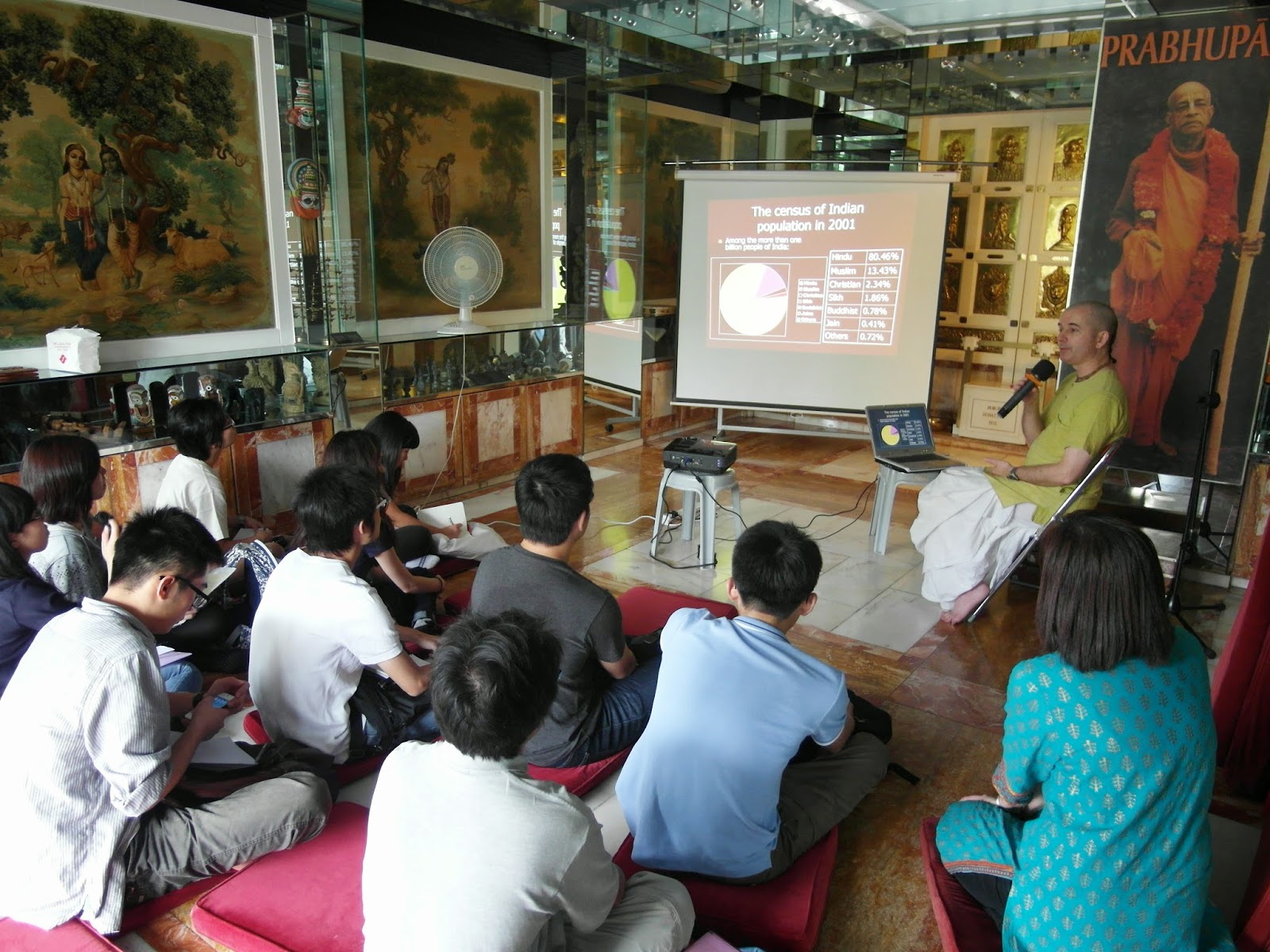Session 2: An experience in Hinduism, Indian food and dress
Speakers: Mr. Steven Matthew, Ms. Lillian Tsang from ISKCON
Temple
Have
you ever wonder why all the Gods in Hinduism are in blue? Why they have so many
Gods? Are they worshipping idols? What does yoga mean in Indian culture? Why
usually all yoga sessions end with a word “Namaste,” what does it mean?
The International Society for Krishna Consciousness (ISKCON), known colloquially as the Hare Krishna movement or Hare Krishnas, is a Hindu Gaudiya
Vaishnava religious organization. It centers its beliefs around the sacred text Bhagavad Gita in Hinduism. The ISKCON
Hong Kong works hard to promote understanding and experiences to the majority
Chinese.
In
this session, the participants of the workshop together with Prof. Tam went to
the ISKCON Temple in Tsim Sha Tsui to try to gain some insights in Hinduism—the
dominant religion in India, as well as learn about Indian food and dress
culture—precisely how the religion has influenced both, and simultaneously how
both Indian food and dress culture affect outsiders’ interpretation of the
religion.
 |
| The Hindu god Krishna worshipped in ISKCON |
Mr.
Steven Matthew, a priest of the temple, presented an overview of Hinduism in
general and the ISKCON movement in particular. According to Mr. Matthew,
Hinduism is the world’s oldest organized religion, and it is still the most
popular religion in India—encompassing about 80% of the population. ISKCON,
commonly known as the Hare Krishna Movement, is a branch of the Hindu tradition
founded by Srila Prabhupada in New York city in 1965. The ISKCON temple in Hong
Kong is a place where many Indians celebrate their tradition away from home.
 |
| Mr. Steven Matthew lecturing on religious traditions in India |
Steven
starts the presentation by explaining the meaning of Namaste—a common phrase
Hong Kong people usually hear when they finish any yoga class. It is, according
to Steven, a traditional Hindu way of greeting each other. In Hindu doctrines,
they believe that bringing the hands together in front of the heart can
increase the flow of Divine love. Doing a legit greeting with Namaste, one
should close the eyes and bow the head. This allows the individual to surrender
to the Divine in the heart, and free from ego-connection. Put differently,
Namaste allows a person greeting another spiritual person from the inner self.
Musical
chanting plays an important role in Hindu rituals and traditions. Especially,
music and dance are the preferred worship vehicles for Krishna devotees. After
Steven’s presentation, Miss Lillian Tsang led the participants to sing a
spiritual hymn that is dedicated to Krishna. A traditional Indian musical
instrument is used to accompany the hymn.
 |
| Ms. Lillian Tsang leading a Hindu hymn |
The
participants had a chance to try on the Indian style dress and visit the
designated kitchen where offering to the god is prepared. The visit ended with
a light vegetarian meal prepared by the temple’s devotees, which include a
delicious almond cake made without using eggs (egg is considered as a taboo for
Krishna devotees).
 |
| Participants trying on Indian style dress |
 |
| Participants visiting the designated kitchen in ISKCON where the offering to the god is prepared |
No comments:
Post a Comment